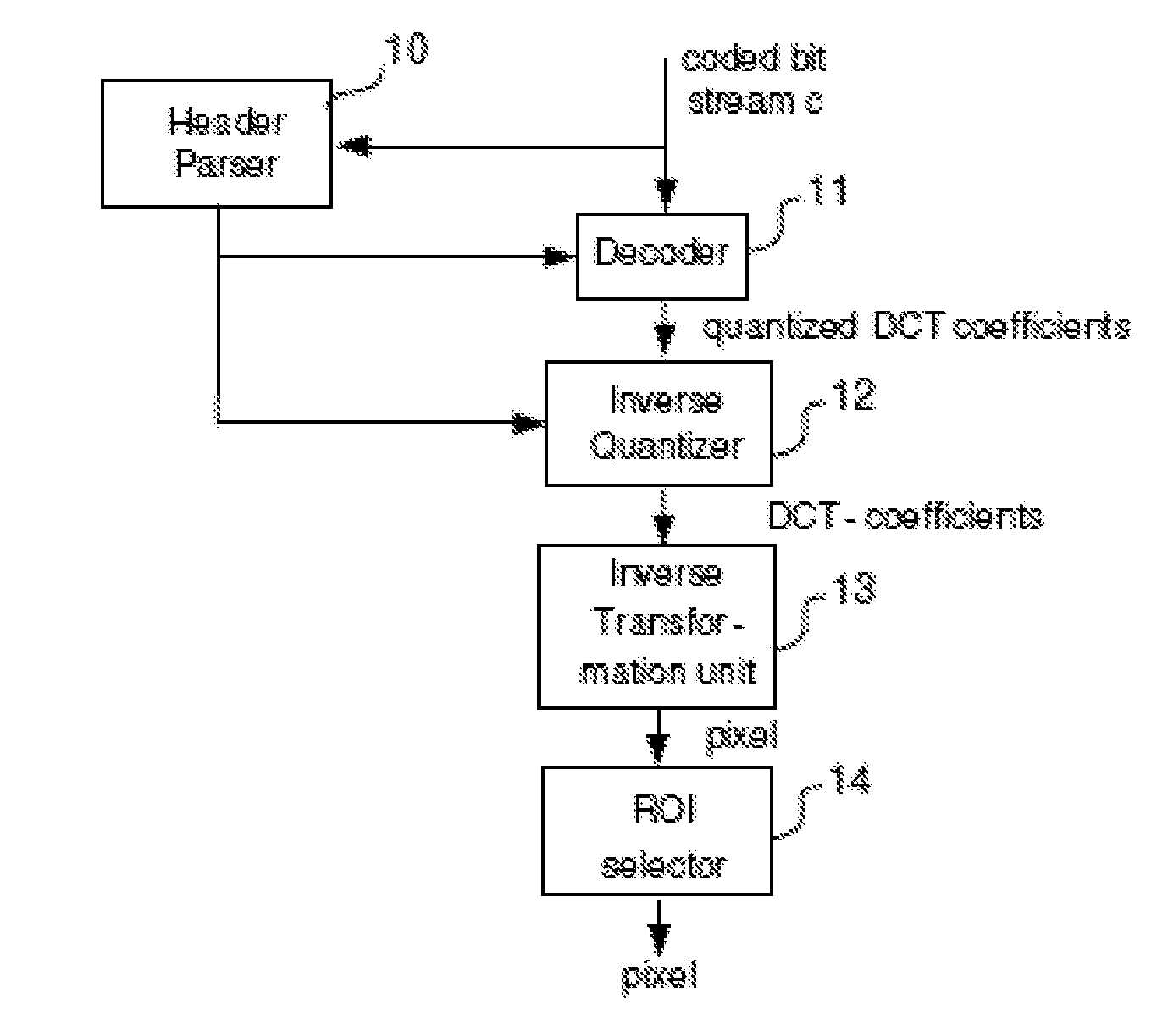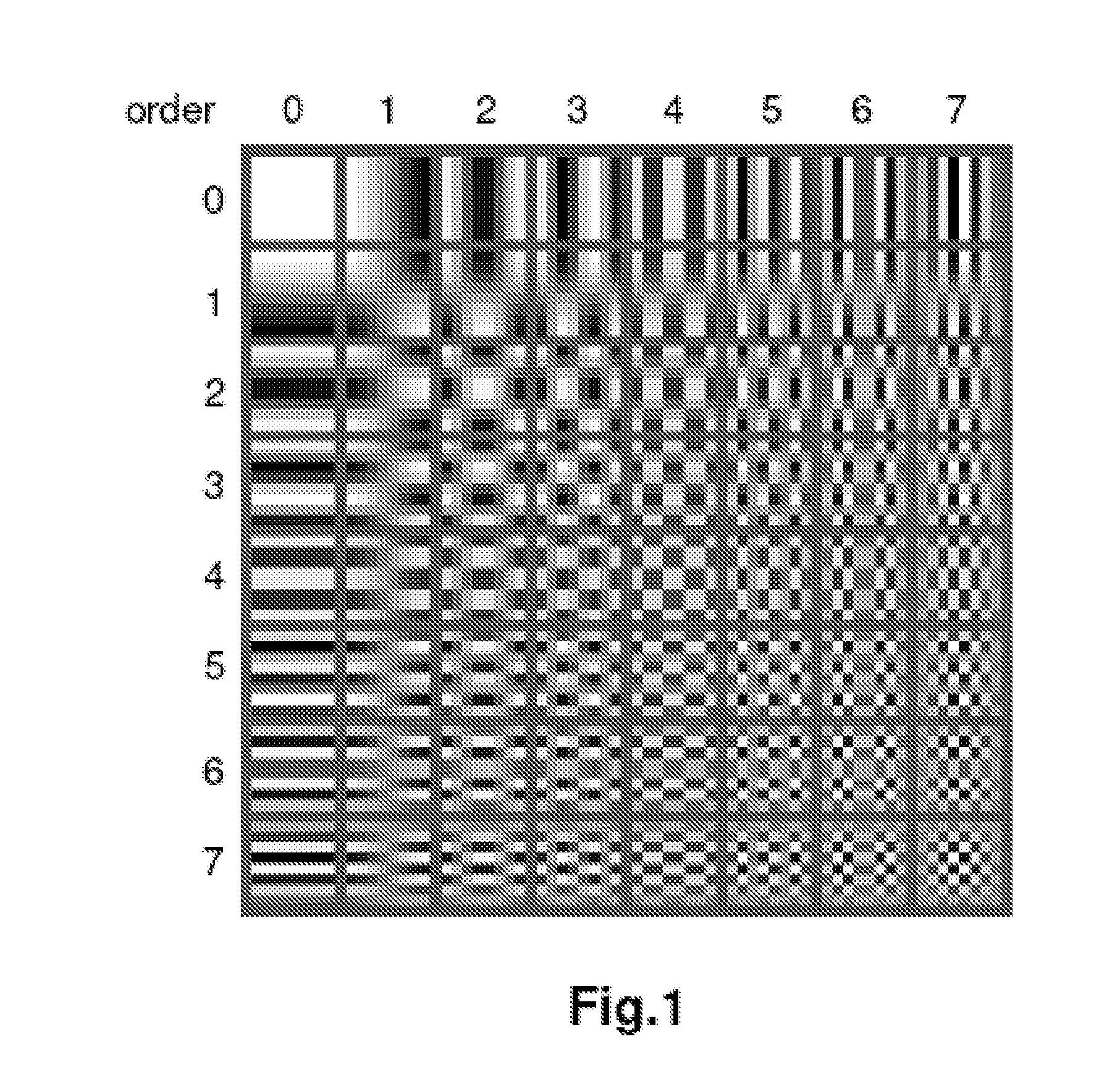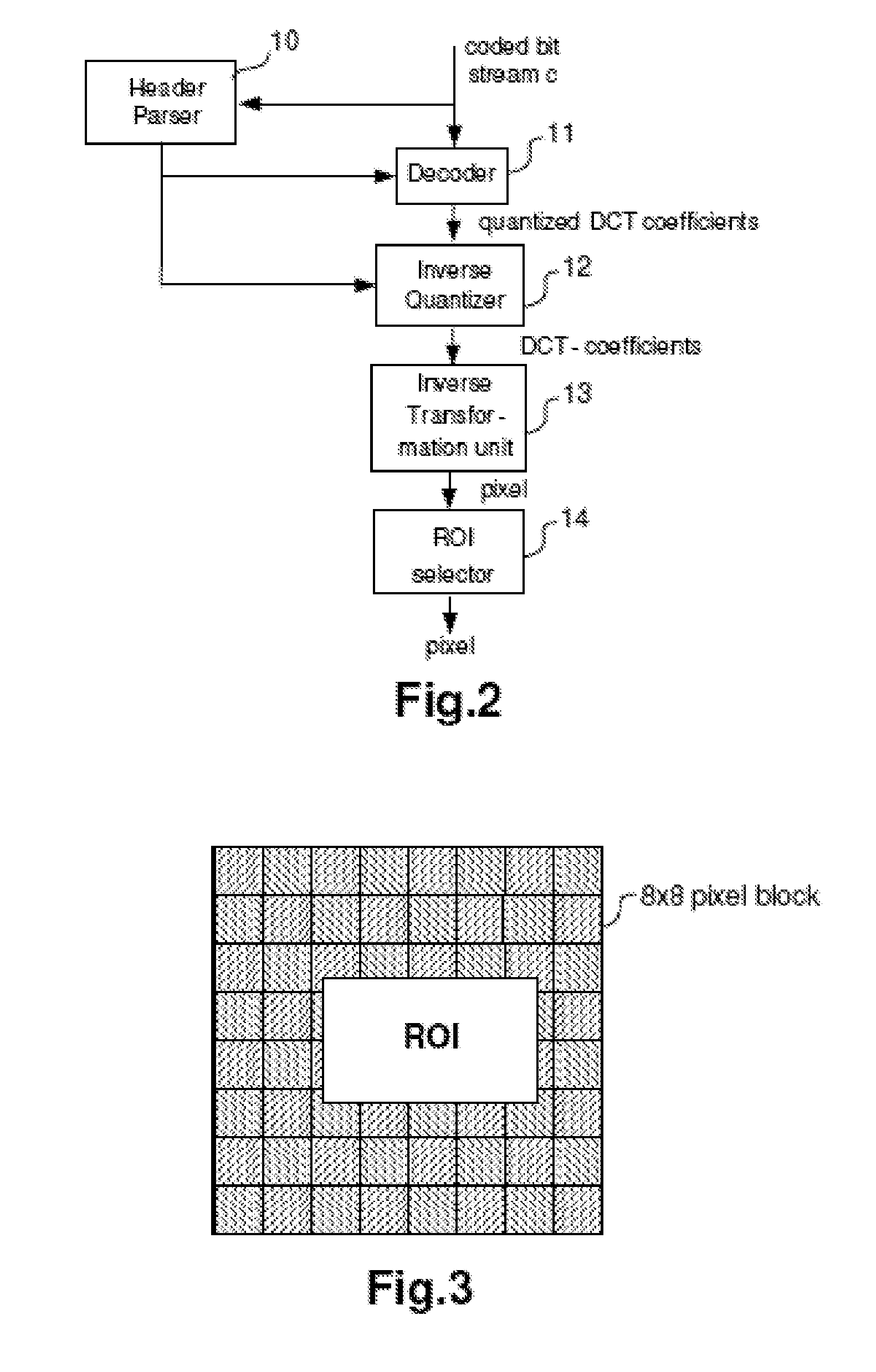Decoder for selectively decoding predetermined data units from a coded bit stream
a data unit and coded bit technology, applied in the field of decoding predetermined data units from a coded bit stream, can solve the problems of inability of decoding, inability to store, and high hardware consumption of conventional decoding devices, so as to save computation resources, computation time and memory, and search for the required information more efficiently.
- Summary
- Abstract
- Description
- Claims
- Application Information
AI Technical Summary
Benefits of technology
Problems solved by technology
Method used
Image
Examples
second embodiment
[0059]Preferably, the specification unit 110 is connected to the decoding unit 130 to provide the start position us indicating a start point in the Look Up Table 140 where the decoding unit 130 might start with the decoding process for the ROI reconstruction (not illustrated). Therewith, the specification of the start position us gets independent from the coded bit stream c. In a second embodiment, the line based method as shown in FIGS. 8 and 9 the specification unit 110 is additionally connected to the parsing unit 120 to provide the start position of the MCU line within the coded bit stream c. The parsing unit 120 will use this start position to parse the coded bit stream c until it detects the MCU contributing to the ROI. This detected position will then be used by the decoding unit 130 to decode and reconstruct the ROI itself.
[0060]A further preferred embodiment of the decoder 100 comprises a look-up table 140, hereinafter called LUT. The LUT stores the parsed information up an...
first embodiment
[0069]The line anchor point determination unit 124 determines the bit positions u0pi of the first bits of each line at least partly including the ROI. Accordingly, the line DC-block-coefficient determination unit 125 determines the DC-block-coefficients DC0i of the first 8×8 block included in the first MCU of each line at least partly comprising the ROI. The bit positions u0pi of the first bit of each line and the DC-block-coefficient DC0i of each first 8×8 block of each line at least partly comprising the ROI are now stored in the look-up table 126 connected to the DC-block-coefficient determination unit 128 and the anchor point determination unit 127. The differences to the DC-block-coefficient determination unit 122 and the anchor point determination unit 121 of the parsing unit 120 are in detail the usage of the stored bit positions u0pi of each first bit of each line at least partly comprising the ROI and the usage of the DC-block-coefficients DC0i of each MCU included in the ...
PUM
 Login to View More
Login to View More Abstract
Description
Claims
Application Information
 Login to View More
Login to View More - R&D
- Intellectual Property
- Life Sciences
- Materials
- Tech Scout
- Unparalleled Data Quality
- Higher Quality Content
- 60% Fewer Hallucinations
Browse by: Latest US Patents, China's latest patents, Technical Efficacy Thesaurus, Application Domain, Technology Topic, Popular Technical Reports.
© 2025 PatSnap. All rights reserved.Legal|Privacy policy|Modern Slavery Act Transparency Statement|Sitemap|About US| Contact US: help@patsnap.com



